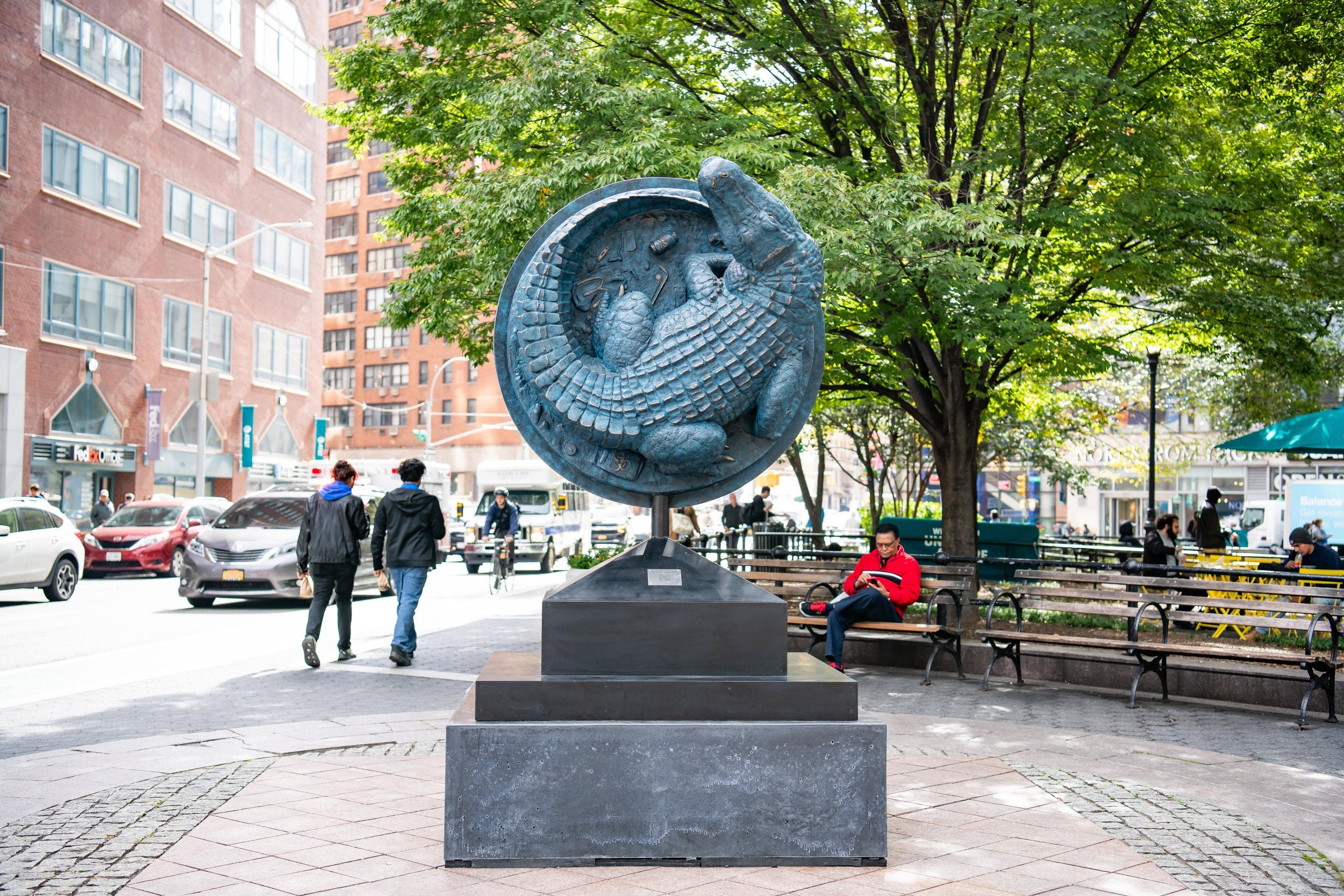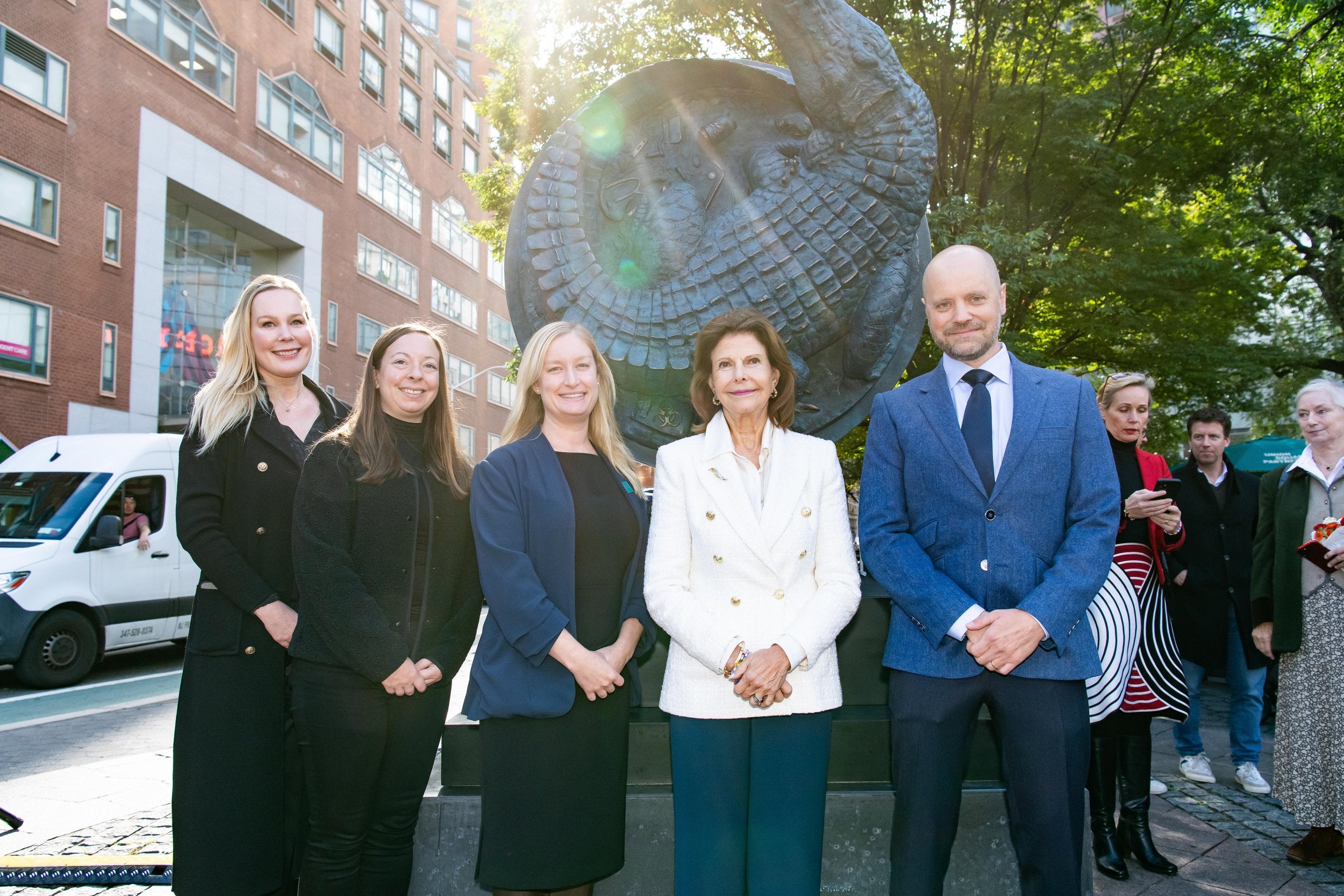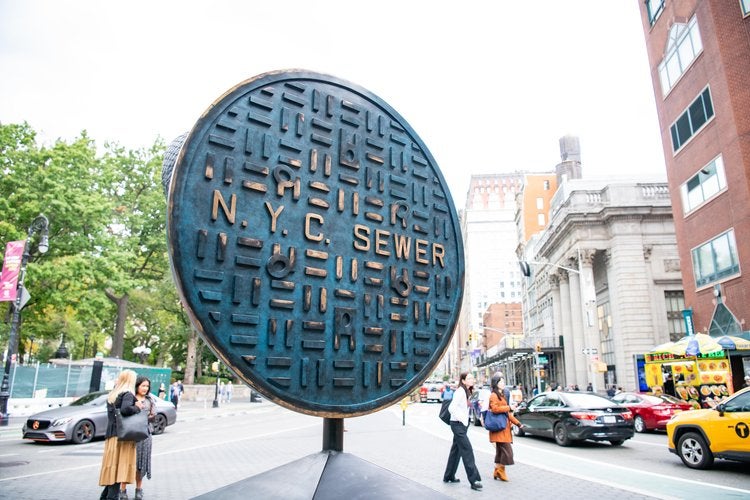Alligator sewer myth comes to life with New York statue
A legend so intriguing that even Queen Silvia of Sweden came for the comemoration

Your support helps us to tell the story
From reproductive rights to climate change to Big Tech, The Independent is on the ground when the story is developing. Whether it's investigating the financials of Elon Musk's pro-Trump PAC or producing our latest documentary, 'The A Word', which shines a light on the American women fighting for reproductive rights, we know how important it is to parse out the facts from the messaging.
At such a critical moment in US history, we need reporters on the ground. Your donation allows us to keep sending journalists to speak to both sides of the story.
The Independent is trusted by Americans across the entire political spectrum. And unlike many other quality news outlets, we choose not to lock Americans out of our reporting and analysis with paywalls. We believe quality journalism should be available to everyone, paid for by those who can afford it.
Your support makes all the difference.The urban myth of the New York City sewer alligator has come to life, in a new Union Square Park statue unveiled last week.
The statue depicts a life-sized alligator sitting on the inside of a manhole cover lid surrounded by toxic waste and trash, as if it has just been flipped up onto the outside world.
Swedish artist Alexander Klingspor created this huge artwork out of bronze. It is an homage to the century-old myth that the sewer system under the bustling streets of New York City is ruled by sewer alligators, a release from Union Square Partnership said.
Legend has it that around 100 years ago, New Yorkers abandoned their baby alligator pets, imported from Louisiana and Florida, once they grew too large to accommodate, the release said.
Ever since, countless myths have circled the story, and depictions in film and TV retell the legend of the underbelly gang of alligators.
Aptly named “N.Y.C Legend,” Mr Klingspor created the artwork in collaboration with Molbrinks Gallery and dedicated it to the “resilience of both alligators and New Yorkers.”

The partnership said that the alligator, on top of being a fun myth, also represents New York City’s capacity to “adapt and survive,” as the alligator in many ancient cultures is admired for its armour-like scales and ability to regrow limbs.
Mr Klingspor said on his website that after living in Manhattan for over a decade, he wanted to pay tribute to the city.

“This artwork deals with two interesting aspects of our world: our need for gods, myths, and legends much like any other civilisation prior to ours, and our habit of creating invasive species by moving animals from their natural habitats to human environments,” he said.
The rumours of these sewer-dwelling beasts date back to the 1930s - archives from The New York Times in 1935 display an article about a gang of youths who found an alligator in a manhole and beat the creature to death.
It is currently illegal to own an alligator in New York state and city; however, earlier this year, an alligator was pulled out of a pond in Brooklyn, reportedly determined to be an escaped pet.
The artwork will be displayed in Triangle Plaza of Union Square Park until June 2024.
Join our commenting forum
Join thought-provoking conversations, follow other Independent readers and see their replies
Comments